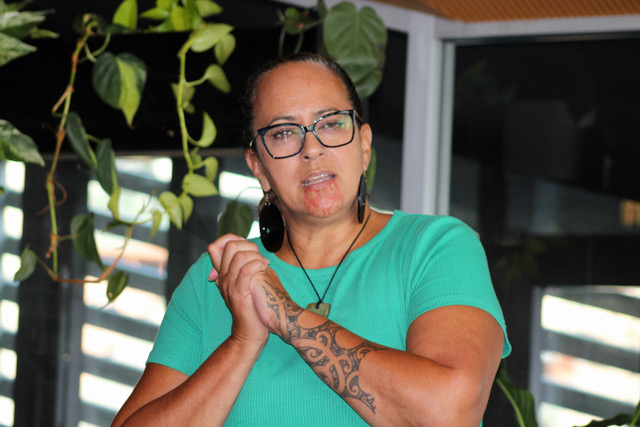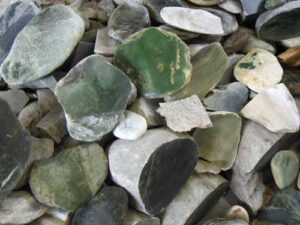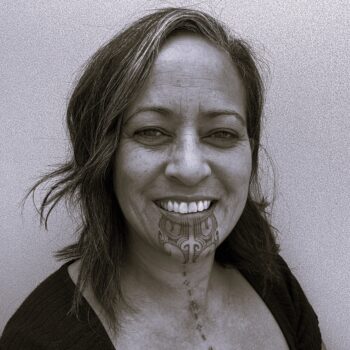
April 1st, 2023
From Coach to Tiriti Partner
Nāu te rourou, nāku te rourou, ka ora ai te iwi.
Individually, collectively, nationally
Recently I was invited to deliver a keynote speech at the Strengths Network WEAVE conference. The conference was full of CliftonStrengths coaches from all walks of life from around Aotearoa.
As a CliftonStrengths coach, I have my favourite whakatauki (Māori proverb) when I work with individuals and groups.
Nāu te rourou, nāku te rourou, ka ora ai te iwi
For me this whakatauki encapsulates the ‘strengths’ conversation to a tee. The translation being:
With your food basket and my food basket, the people will live.
My personal CliftonStrengths interpretation is that when you bring your best and I do the same, we can contribute to others bringing their best. Or another way, when you bring your strengths and I bring mine, we can get stuff done!
The role of a CliftonStrengths coach is to help people explore their unique contribution to the world around them.
Ko wai koe? Who are you?
- What is right with you?
- What makes you unique?
- What is natural for you?
Your Uniqueness
- Dominant CliftonStrengths themes
- Surrounding CliftonStrengths themes
- Experiences
- Gender spectrum
- Life experiences
- Culture
- Base personality
- Beliefs
- Values
- Skills and talent
When all of these things combine in a healthy state you can accomplish the day-to-day things to the best of your ability.
A couple of years ago I was a part of a group who were invited by a Ngāti Waewae representative to take some rangatahi to the Arahura river to look for pounamu. This was a significant trip as we were hoping to find a piece of pounamu that would sit in our newly built whare that would be a place for rangatahi and community to congregate.
For Iwi, Māori pounamu is a taonga (a treasure), something that is precious and is traditionally gifted to others due to its special status. It can be shaped into many forms, from ornate weapons to jewellery. We understand its innate value.
While our group was tramping into one of the huts along the Arahura River, there were a couple of us who were only walking a couple of hours in and then returning to the Arahura Marae. As we were being guided up the river, it struck me how many beautiful pieces of rock there were scattered about the river bed. I also realised very quickly that I couldn’t distinguish between a rock and a pounamu. There was no resemblance of the piece that adorned my neck to anything I saw amongst the stones of the riverbed.
A couple of years ago I was a part of a group who were invited by a Ngāti Waewae representative to take some rangatahi to the Arahura river to look for pounamu. This was a significant trip as we were hoping to find a piece of pounamu that would sit in our newly built whare that would be a place for rangatahi and community to congregate.
For Iwi, Māori pounamu is a taonga (a treasure), something that is precious and is traditionally gifted to others due to its special status. It can be shaped into many forms, from ornate weapons to jewellery. We understand its innate value.
While our group was tramping into one of the huts along the Arahura River, there were a couple of us who were only walking a couple of hours in and then returning to the Arahura Marae. As we were being guided up the river, it struck me how many beautiful pieces of rock there were scattered about the river bed. I also realised very quickly that I couldn’t distinguish between a rock and a pounamu. There was no resemblance of the piece that adorned my neck to anything I saw amongst the stones of the riverbed.
 Our guides were very patient when constantly being asked, and not just by me, whether the stone we had just picked up was pounamu or not. In fact the answer was always “no, that is a (insert type of rock here) not a pounamu”. Just as a side note, we were told later that you don’t find the pounamu, it finds you! Well no pounamu found me that day.
Our guides were very patient when constantly being asked, and not just by me, whether the stone we had just picked up was pounamu or not. In fact the answer was always “no, that is a (insert type of rock here) not a pounamu”. Just as a side note, we were told later that you don’t find the pounamu, it finds you! Well no pounamu found me that day.
The moral of this story is sometimes you need a trained eye to see the taonga inside. When that is established then it is time to shape the pounamu, which I imagine takes a lot of time, patience and at times hard work. The result is a unique piece of art that is pleasing to the eye and holds significant personal connection. Each piece has its own distinctive colours and patterns within the stone.
It is very much like this in the ‘strengths’ world. When we sit with people and start to unwrap the taonga that is already within, it can sometimes be found in its raw state, with a few jagged edges and rough surfaces. Helping people reach for their potential is finding ways to smooth and buff and bring out the beauty of the taonga. This is the mature state where its potential is realised.
As coaches, we are working within a context that is distinctive – we live in Aotearoa, where Iwi Māori/Tangata Whenua are indigenous and we have Te Tiriti o Waitangi as one of the most significant documents in our history. This is our very own unique context, nowhere else in the world is this combination repeated.
As coaches do you see yourselves as Tiriti partners? If we are to work in a strengths-based world, we must be able to see ourselves contributing to the bigger contextual picture of Aotearoa. Our role as coaches is to recognise and help bring out the best in individuals and small groups, but what would happen if we widened that lens to encompass and give mana to Te Tiriti relationship.
What if we applied this to our Tiriti relationship?

Ko wai koe? Who are you?
- What makes you unique?
- What is right with you?
- What is your contribution to the world around you?
Have you discovered the unique contribution that Tangata Whenua hold?
- Tikanga – ways of doing things

- Mātauranga Māori – ancient knowledge and wisdom
- Te Ao Māori world view
- Experiences
- Traditional practices
- Culture
As CliftonStrengths coaches, we have a perspective of people that delves deeper than most.
Imagine if we widened that perspective as Tiriti partners!
Ngā mihi,
Danette Abraham-Tiatia, Leadership Lab Consultant, CliftonStrengths Coach and Founder of Ko Au Consultancy
You can also connect with stories of impact from across our Leadership Lab ecosystem by signing up for this monthly pānui (see bottom of www.leadershiplab.co.nz ), joining our Leadership Lab LinkedIn page and browsing our website. Thanks heaps for your interest.

April 1st, 2023
From Coach to Tiriti Partner
Nāu te rourou, nāku te rourou, ka ora ai te iwi.
Individually, collectively, nationally
Recently I was invited to deliver a keynote speech at the Strengths Network WEAVE conference. The conference was full of CliftonStrengths coaches from all walks of life from around Aotearoa.
As a CliftonStrengths coach, I have my favourite whakatauki (Māori proverb) when I work with individuals and groups.
Nāu te rourou, nāku te rourou, ka ora ai te iwi
For me this whakatauki encapsulates the ‘strengths’ conversation to a tee. The translation being:
With your food basket and my food basket, the people will live.
My personal CliftonStrengths interpretation is that when you bring your best and I do the same, we can contribute to others bringing their best. Or another way, when you bring your strengths and I bring mine, we can get stuff done!
The role of a CliftonStrengths coach is to help people explore their unique contribution to the world around them.
Ko wai koe? Who are you?
- What is right with you?
- What makes you unique?
- What is natural for you?
Your Uniqueness
- Dominant CliftonStrengths themes
- Surrounding CliftonStrengths themes
- Experiences
- Gender spectrum
- Life experiences
- Culture
- Base personality
- Beliefs
- Values
- Skills and talent
When all of these things combine in a healthy state you can accomplish the day-to-day things to the best of your ability.
A couple of years ago I was a part of a group who were invited by a Ngāti Waewae representative to take some rangatahi to the Arahura river to look for pounamu. This was a significant trip as we were hoping to find a piece of pounamu that would sit in our newly built whare that would be a place for rangatahi and community to congregate.
For Iwi, Māori pounamu is a taonga (a treasure), something that is precious and is traditionally gifted to others due to its special status. It can be shaped into many forms, from ornate weapons to jewellery. We understand its innate value.
While our group was tramping into one of the huts along the Arahura River, there were a couple of us who were only walking a couple of hours in and then returning to the Arahura Marae. As we were being guided up the river, it struck me how many beautiful pieces of rock there were scattered about the river bed. I also realised very quickly that I couldn’t distinguish between a rock and a pounamu. There was no resemblance of the piece that adorned my neck to anything I saw amongst the stones of the riverbed.
A couple of years ago I was a part of a group who were invited by a Ngāti Waewae representative to take some rangatahi to the Arahura river to look for pounamu. This was a significant trip as we were hoping to find a piece of pounamu that would sit in our newly built whare that would be a place for rangatahi and community to congregate.
For Iwi, Māori pounamu is a taonga (a treasure), something that is precious and is traditionally gifted to others due to its special status. It can be shaped into many forms, from ornate weapons to jewellery. We understand its innate value.
While our group was tramping into one of the huts along the Arahura River, there were a couple of us who were only walking a couple of hours in and then returning to the Arahura Marae. As we were being guided up the river, it struck me how many beautiful pieces of rock there were scattered about the river bed. I also realised very quickly that I couldn’t distinguish between a rock and a pounamu. There was no resemblance of the piece that adorned my neck to anything I saw amongst the stones of the riverbed.
 Our guides were very patient when constantly being asked, and not just by me, whether the stone we had just picked up was pounamu or not. In fact the answer was always “no, that is a (insert type of rock here) not a pounamu”. Just as a side note, we were told later that you don’t find the pounamu, it finds you! Well no pounamu found me that day.
Our guides were very patient when constantly being asked, and not just by me, whether the stone we had just picked up was pounamu or not. In fact the answer was always “no, that is a (insert type of rock here) not a pounamu”. Just as a side note, we were told later that you don’t find the pounamu, it finds you! Well no pounamu found me that day.
The moral of this story is sometimes you need a trained eye to see the taonga inside. When that is established then it is time to shape the pounamu, which I imagine takes a lot of time, patience and at times hard work. The result is a unique piece of art that is pleasing to the eye and holds significant personal connection. Each piece has its own distinctive colours and patterns within the stone.
It is very much like this in the ‘strengths’ world. When we sit with people and start to unwrap the taonga that is already within, it can sometimes be found in its raw state, with a few jagged edges and rough surfaces. Helping people reach for their potential is finding ways to smooth and buff and bring out the beauty of the taonga. This is the mature state where its potential is realised.
As coaches, we are working within a context that is distinctive – we live in Aotearoa, where Iwi Māori/Tangata Whenua are indigenous and we have Te Tiriti o Waitangi as one of the most significant documents in our history. This is our very own unique context, nowhere else in the world is this combination repeated.
As coaches do you see yourselves as Tiriti partners? If we are to work in a strengths-based world, we must be able to see ourselves contributing to the bigger contextual picture of Aotearoa. Our role as coaches is to recognise and help bring out the best in individuals and small groups, but what would happen if we widened that lens to encompass and give mana to Te Tiriti relationship.
What if we applied this to our Tiriti relationship?

Ko wai koe? Who are you?
- What makes you unique?
- What is right with you?
- What is your contribution to the world around you?
Have you discovered the unique contribution that Tangata Whenua hold?
- Tikanga – ways of doing things

- Mātauranga Māori – ancient knowledge and wisdom
- Te Ao Māori world view
- Experiences
- Traditional practices
- Culture
As CliftonStrengths coaches, we have a perspective of people that delves deeper than most.
Imagine if we widened that perspective as Tiriti partners!
Ngā mihi,
Danette Abraham-Tiatia, Leadership Lab Consultant, CliftonStrengths Coach and Founder of Ko Au Consultancy
You can also connect with stories of impact from across our Leadership Lab ecosystem by signing up for this monthly pānui (see bottom of www.leadershiplab.co.nz ), joining our Leadership Lab LinkedIn page and browsing our website. Thanks heaps for your interest.


